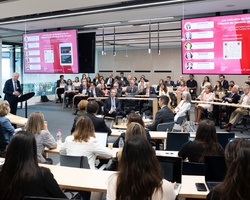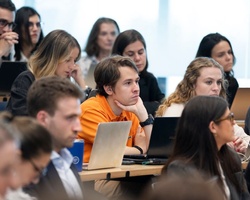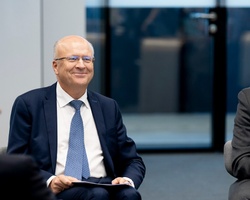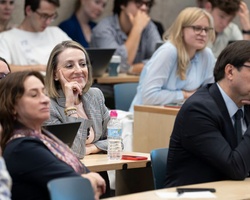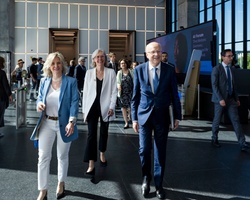- Home
- We Are Law School
- News
- The President Of The Court Of Justice Of The European Union, Koen Lenaerts, Visits Ie Law School
The president of the Court of Justice of the European Union, Koen Lenaerts, visits IE Law School
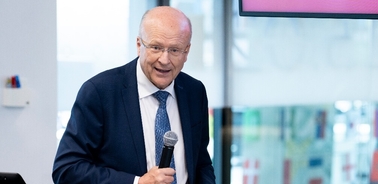
IE Center for European Studies receives coauthors of the book ‘Methods of Interpretation and the European Court of Justice’ Spanish edition.
Following the publication of the Spanish edition of the book Methods of Interpretation and the European Court of Justice, coauthors Koen Lenaerts, president of the Court of Justice of the European Union (CJEU), and José Antonio Gutiérrez-Fons, lawyer of the CJEU, participated in a discussion with professors and students from IE Law School. Throughout the event, the panel addressed some of the questions asked on how to understand and interpret the rules that make up the European Union’s legal system. Also present to participate in the discussion was Marie-José Garot, director of IE Center for European Studies and associate professor at IE Law School; Paz Andrés Sáenz de Santa María, permanent adviser of the state and professor of public international law; and Daniel Sarmiento, adjunct professor at IE Law School and counsel at Uría Menéndez.
Preliminary dialogue
During the event—organized by IE Center for European Studies, IE Publishing and Marcial Pons publishing house, and held at IE Tower in Madrid—Lenaerts highlighted the quality and complexity of the questions posed for a preliminary ruling by the Spanish Supreme Court. He also emphasized that, “Preliminary dialogue is a dialogue in accordance with the law, it is not a dialogue on political or factual issues, but rather on interpreting norms of EU law.”
Linguistic differences and methodology
The text analyzes various ways of resolving linguistic differences by means of case law. In its study, special attention is paid to the way in which the CJEU makes decisions in a legal framework of 24 languages, serving as a bridge to speak the same legal language and reach an understanding.
Following a brief introduction, the article examines the so-called “traditional” methods of interpretation, including literal, contextual and teleological interpretation. Part of the study is also dedicated to the methods intended to ensure that EU law is interpreted in accordance with international law, as well as with the constitutional traditions common to member states. The final chapter of the article focuses on charters, which unlike treaties, does not contain a series of provisions on the interpretation of the rights and principles set forth. José Antonio, the book’s coauthor adds, “We defend that EU law is open to international law, but with limits.”
An addictive and educational read
During the presentation of the Spanish edition of the book, panelist Daniel Sarmiento admits to being a repeat user of the publication, having used it as a reference since its publication in English, then in French and now in Spanish. Similarly, Paz Andrés de Santa María also highly recommends the article, explaining that it provides a complete overview of the methods used by the Court of Justice.
“The studies carried out in recent years favor a somewhat normative and philosophical approach to methods of interpretation without focusing on how the CJEU arrives at a differing interpretive conclusion. We wanted to fill that gap with this article,” notes Lenaerts. Therefore, this piece offers a differentiating angle—it is both pedagogical and useful for jurists versed in European legislation.
“The methods of interpretation serve as a bridge for the Spanish Supreme Court and the Court of Justice of the European Union to speak the same legal language and understand one another.”
Koen Lenaerts, President of the Court of Justice of the European Union

